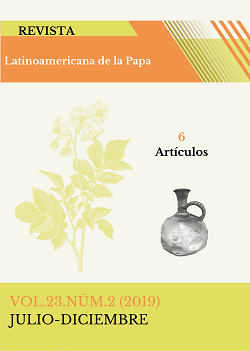An approach to measuring food losses in the potato chain in Ecuador and Peru
##plugins.themes.bootstrap3.article.main##
Abstract
Potato production and the related commercial and technological characteristics in the potato value chain, is one of the most important sources of income and food security of thousands of small-scale farmers in the Andes, who are increasingly challenged by trends of urbanization, volatility of agricultural prices, water and land scarcity, environmental stress, and weather shocks. Understanding food losses along the potato value chain and what role these losses play in food security has recently caught the interest of researchers and policy makers as reducing food losses can improve food availability without increasing agricultural inputs, use of land, or technological improvements on the production side. However, estimating food losses has proven to be a daunting task and efforts have yielded estimates that vary considerably. The methodology presented in this study distinguishes losses that are due to physical quantities from those due to quality and value. The results show that the most important losses occur in the production link and that the most important losses faced by small-scale potato producers occur due to crop management practices (before harvest), pests and diseases, frost and drought. Losses in production amount to an average of 95% of total losses in the value chain. This paper reports on the study conducted by the International Potato Center (CIP) through the CGIAR Program on Policy, Institution and Markets (PIM) lead by IFPRI, to evaluate the extent and sources of food losses taking as case study key potato value chains in Ecuador and Peru.
Download Statistics
##plugins.themes.bootstrap3.article.details##

This work is licensed under a Creative Commons Attribution-NonCommercial-ShareAlike 4.0 International License.

